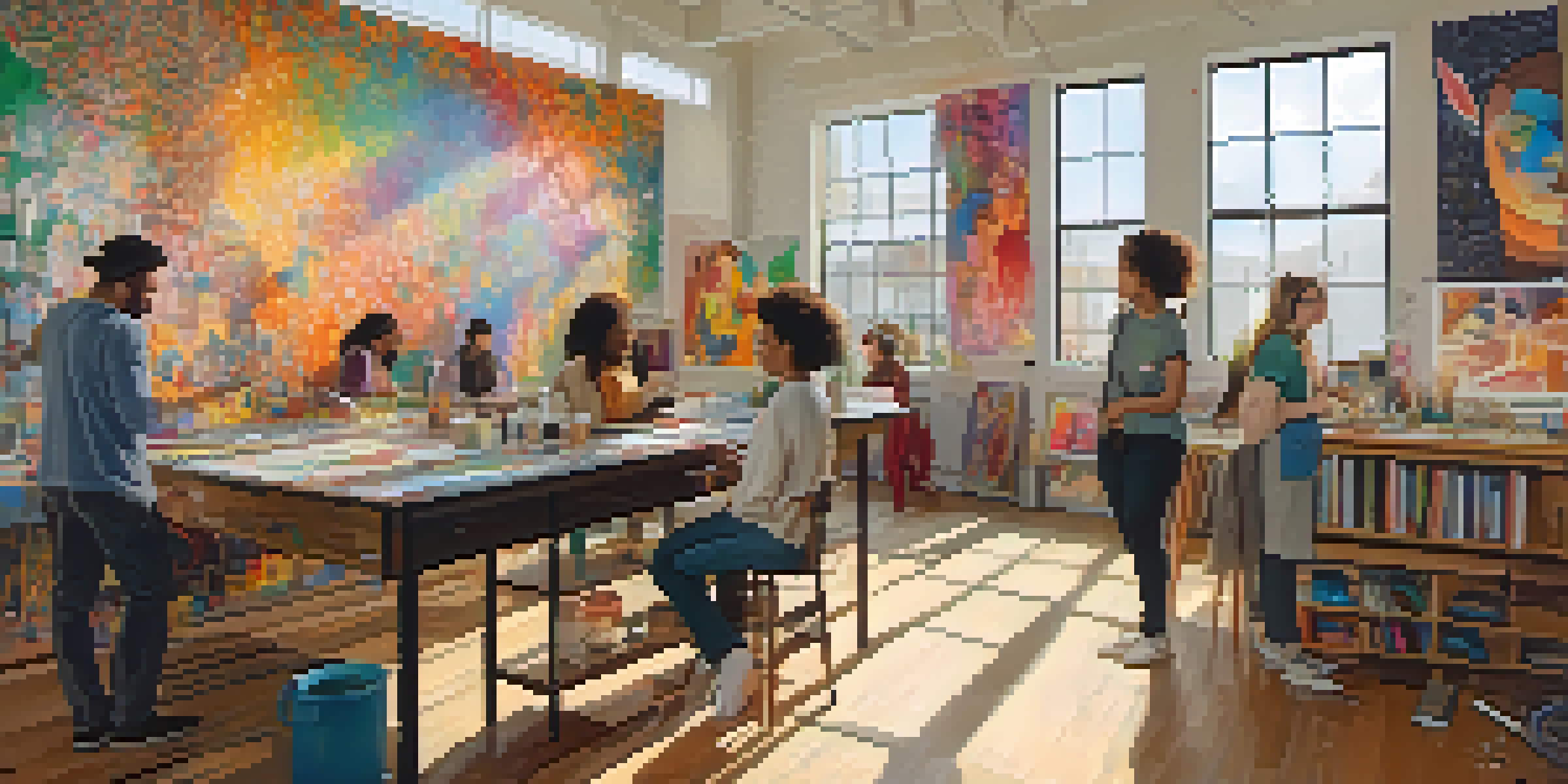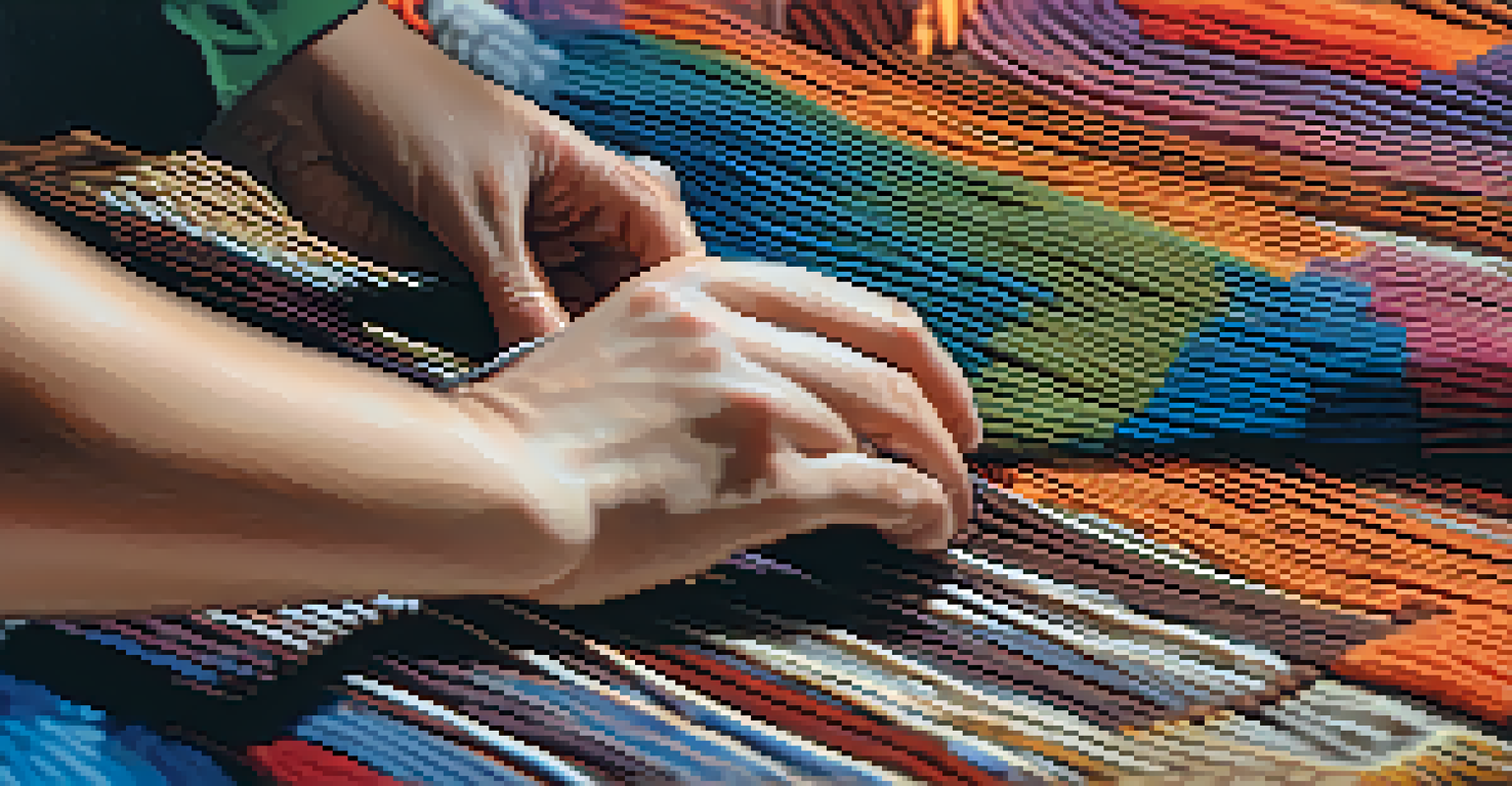The Influence of Gender on Cultural Artistic Expression

Understanding Gender's Role in Art and Culture
Gender influences how individuals express themselves through art. Often, societal norms dictate what is deemed acceptable for different genders. This creates a rich tapestry of expression where men and women may explore themes in unique ways, reflecting their personal experiences and societal expectations.
Art is a universal language that transcends boundaries and speaks to the human experience, reflecting our individual and collective identities.
For instance, women artists historically faced barriers, leading to a distinct voice that often tackled issues of identity and empowerment. In contrast, male artists might focus on themes of power and dominance, shaped by their roles in society. As these dynamics evolve, so too does the art we see.
Moreover, gender identity is not binary; artists of diverse gender identities bring their perspectives into the mix. This shifts the conversation around art and culture, allowing for a broader understanding of emotional and social landscapes.
Historical Perspectives on Gender and Art
To appreciate the influence of gender on art, we can look back at history. In many cultures, men were often the celebrated artists, while women's contributions were overlooked. This bias can be seen in the lack of representation of female artists in galleries and museums, which has persisted for centuries.

However, the feminist art movement of the 1970s challenged this narrative, bringing women's stories and experiences to the forefront. Artists like Judy Chicago and Miriam Schapiro used their work to address issues of gender inequality, creating spaces for women's voices in the art world.
Gender Shapes Artistic Expression
Gender influences how artists express themes, with male and female artists often exploring different societal norms and personal experiences.
Today, as we uncover forgotten female artists and acknowledge their contributions, we see a more balanced representation. This shift not only enriches our understanding of art history but also highlights the importance of diverse perspectives in shaping cultural narratives.
The Modern Art Scene and Gender Dynamics
In the contemporary art world, gender continues to play a significant role. Artists are increasingly using their platforms to challenge stereotypes and advocate for social change. For example, exhibitions focused on gender identity and sexual orientation have gained traction, sparking important conversations in society.
Gender is a spectrum, not a binary, and art is one of the most powerful mediums through which we can explore and express that complexity.
Furthermore, art fairs and galleries are beginning to showcase more gender-diverse artists, reflecting a growing awareness of representation. This inclusivity allows for a richer dialogue around art, as different viewpoints emerge and challenge traditional norms.
As this trend continues, we can expect to see a shift in how art is created and perceived. By embracing diverse voices, the art world becomes a more vibrant and reflective space, offering a broader spectrum of human experience.
Gender and Artistic Mediums: A Comparative Analysis
Different artistic mediums also reflect gender influences in unique ways. For instance, historically, painting and sculpture have been male-dominated, while crafts like textiles and ceramics were often relegated to women. This distinction can perpetuate stereotypes about what constitutes 'serious' art versus 'domestic' art.
However, many contemporary female artists are reclaiming these mediums, pushing boundaries and redefining their value. Artists like El Anatsui and Grayson Perry blur the lines between fine art and craft, offering new perspectives on gender and creativity.
Historical Bias in Art Representation
The historical lack of representation for female artists has been challenged by movements that aim to highlight diverse voices in the art world.
This evolution challenges the traditional hierarchy of artistic mediums and encourages a more inclusive understanding of what art can be. As these distinctions fade, we see a more holistic appreciation for all forms of artistic expression, regardless of gender.
The Impact of Gender on Themes in Art
Themes in art often mirror the experiences of the artist, and gender plays a crucial role in shaping these narratives. For example, female artists frequently explore themes of motherhood, body image, and identity, reflecting societal pressures and personal experiences. This focus invites viewers to engage with the complexities of gender in a relatable way.
Conversely, male artists may delve into themes of power, aggression, and competition, influenced by traditional masculine ideals. This dynamic can lead to contrasting representations of similar subjects, providing a richer understanding of human experiences.
As artists continue to explore these themes, we gain insights into the intersection of gender and culture. This ongoing dialogue encourages us to reflect on our own experiences and societal norms, fostering a deeper connection to the art we encounter.
Global Perspectives: Gender and Art Across Cultures
Artistic expression varies widely across cultures, with gender playing a pivotal role in shaping these differences. In some societies, women have long been celebrated as cultural custodians, while in others, their voices remain suppressed. Understanding these dynamics helps us appreciate the diversity of artistic expression worldwide.
For example, in many Indigenous cultures, women have traditionally played significant roles in art-making, using their work to convey stories and preserve cultural heritage. In contrast, in more patriarchal societies, women's artistic contributions may be marginalized, leading to a lack of representation.
Future of Art Embraces Inclusivity
As societal norms evolve, the art world is increasingly recognizing the importance of diverse gender identities and perspectives, paving the way for a more equitable landscape.
By examining global perspectives on gender and art, we can better understand the unique challenges and triumphs faced by artists from different backgrounds. This awareness fosters a greater appreciation for the richness of cultural diversity and the vital role of gender in shaping artistic expression.
The Future of Gender in Artistic Expression
Looking ahead, the influence of gender on artistic expression is likely to evolve as societal norms change. As conversations around gender identity and representation gain momentum, we can expect to see even more diverse voices in the art world. This evolution is essential for creating a more inclusive and equitable artistic landscape.
Art institutions are increasingly recognizing the importance of representation and actively seeking to amplify underrepresented voices. Initiatives aimed at supporting female and non-binary artists are becoming more common, paving the way for a more balanced art world.

Ultimately, the future of art is intertwined with the ongoing conversations about gender and identity. By fostering inclusivity and embracing diverse perspectives, we can ensure that the artistic world continues to reflect the richness of human experience.